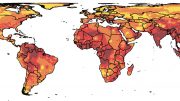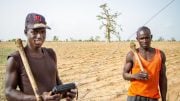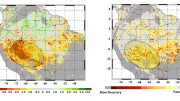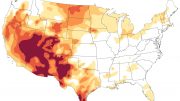
Researchers from Politecnico di Milano and UC Berkeley found a connection between drought-induced food insecurity and conflict in Central America, highlighting the importance of food security as a central mechanism in this relationship. The study emphasizes the need to strengthen rural communities’ resilience in the developing world to prevent social tension and unrest.
A new study published in the journal Nature Water sheds light on the intricate relationship between droughts and conflicts in Central America. Researchers from Politecnico di Milano and the University of California at Berkeley examined the impact of extreme water events on human security. They also delved into how water scarcity impacted agricultural production and food security from 1996 to 2016, and analyzed the connection between drought-related food insecurity and the outbreak of conflicts in the region.
Central American cities are infamous for their high levels of homicides and urban violence, which are often associated with the spread of young street gangs referred to as maras. Additionally, rural communities are threatened by the canícula, a dry season that occurs in July and August, and its devastating effects on agriculture, which is the primary source of food and income.
“For the first time, in our study, we explicitly consider food security as a central mechanism in the chain linking drought-induced water shortage and conflict. We also analyze how the internal food trade can influence the level of food security from food-producing areas to food-consuming areas, such as cities”, Martina Sardo, Ph. D. Student at Politecnico di Milano and lead author of the study said.
Professor Maria Cristina Rulli, the senior author of the article and coordinator of Glob3ScienCE (Global Studies on Sustainable Security in a Changing Environment), commented that “by coupling a physically based spatially distributed hydro-agrological model with a complex statistical model that correlates water and food availability and access; socio-economic indicators to conflict, we find decreases in availability and access to water and food play a major role in conflict insurgences, while the stable conditions of peace are more influenced by favorable socio-economic conditions. Furthermore, conflicts in a given place can also be influenced by water scarcity conditions in distant places, which explains how the internal food trade can strengthen and spatially expand the water-food-conflict nexus.”
The study offers insight into how climate and water availability can interact with human well-being and social unrest through food security. It also shows the importance of strengthening the resilience of rural communities in the developing world to prevent the rise of social tension.
Reference: “Exploring the water–food nexus reveals the interlinkages with urban human conflicts in Central America” by Martina Sardo, Ilenia Epifani, Paolo D’Odorico, Nikolas Galli and Maria Cristina Rulli, 6 April 2023, Nature Water.
DOI: 10.1038/s44221-023-00053-0









Be the first to comment on "Food: A Hidden Factor in Urban Violence in Central America"